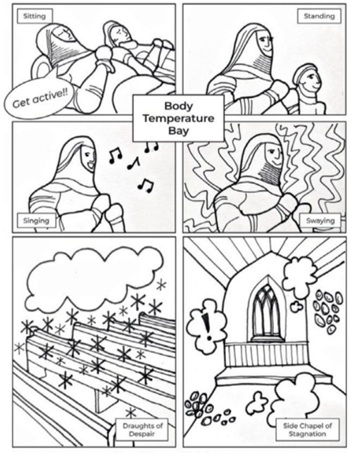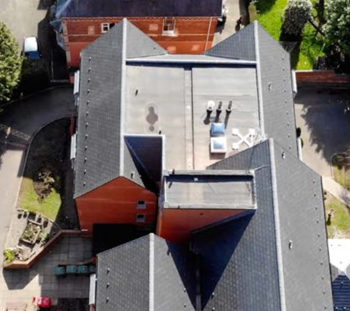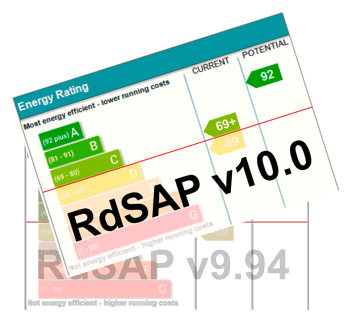Large Industrial Sites report
Contents |
[edit] Introduction
The National Economic Development Council (NEDC) was an economic planning forum established in 1962. NEDC continued to have influence in terms of setting the future strategy for business and industry through the 1970s.
The aim of NEDC was to tackle the UK’s relative economic decline through initiatives including the establishment of the National Economic Development Office (NEDO). NEDO was an independent arm of the NEDC. The two organisations were informally referred to as Neddy.
[edit] NEDO reports
One of the functions of NEDO was to support the work of NEDC through the publication of reports that attempted to improve communication between management, trade unions and government.. The NEDO reports were not universally welcomed.
In 1970, NEDO published 'Large industrial sites: report of the Working Party on Large Industrial Construction Sites'. Publication of the 139 page report came after it was revealed that the existing industrial relations system appeared to foster significant disparities within the levels of the labour hierarchy. For instance, highly paid senior shop stewards often wielded significant power and set standards, but they were not involved with union activities that might have an impact on other workers on the site.
This friction was compounded by wage disparities (along with bonuses and overtime pay), which were cited as the primary cause of strikes in the 1960s. The matter came to the attention of the Government when strikes had an impact on the progress of infrastructure projects that were financed by public resources.
[edit] Addressing discrepancies of training and pay
In 1970, this issue was explored in the NEDO Large Industrial Sites report, which found that engineering construction projects with highly skilled and formally trained workers (such as electricians, mechanical fitters, platers and riggers) experienced fewer project delays. Training for workers in this sector fell under the Engineering Industry Training Board (EITB) rather than the Construction Industry Training Board, which covered trades with less formal training.
After the report was published, NEDO set up a Large Sites Action Group which proposed a National Joint Council (NJC) for the engineering construction sector. This was picked up by various unions under the leadership of the Constructional Engineering Union (CEU), which supported the Large Sites Action Group’s idea for a national agreement for engineering construction.
[edit] The NJC is formed
Although initial efforts to standardise wages and working protocols were not initially supported by small firms and subcontractors, the NJC was finally established in 1981. The mission of the trade union/employer partnership was to foster and encourage strong and cohesive working relationships, while promoting improvements in working practices and culture within contractors and trade unions.
One of the initial tasks was to administer and review the National Agreement for the Engineering Construction Industry (NAECI) - also known as the ‘Blue Book’. This agreement set comprehensive terms and conditions for hourly paid construction workers.
In the aftermath of the publication of the Large Industrial Sites report and the formation of the Large Sites Action Group, the work of the NJC - along with the introduction of the NAECI - contributed to an overall decrease in project delays. Despite the dissolution of the NEDC and NEDO in the 1990s, the NJC continues to prevent, or swiftly resolve, workplace problems on behalf of clients, as well as assisting with change processes undertaken by clients to improve their practices and standards.
[edit] Related articles on Designing Buildings
- Construction industry reports.
- Gangmasters and Labour Abuse Authority (GLAA).
- Identifying the causes of trends in construction labour productivity.
- National Economic Development Office (NEDO) reports.
- National Joint Council for the Engineering Construction Industry.
- The Farmer Review of the UK Construction Labour Model.
- Trade unions.
Featured articles and news
Impact report from the Supply Chain Sustainability School
Free sustainability skills, training and support delivered to thousands of UK companies to help cut carbon.
The Building Safety Forum at the Installershow 2025
With speakers confirmed for 24 June as part of Building Safety Week.
The UK’s largest air pollution campaign.
Future Homes Standard, now includes solar, but what else?
Will the new standard, due to in the Autumn, go far enough in terms of performance ?
BSRIA Briefing: Cleaner Air, Better tomorrow
A look back at issues relating to inside and outside air quality, discussed during the BSRIA briefing in 2023.
Restoring Abbotsford's hothouse
Bringing the writer Walter Scott's garden to life.
Reflections on the spending review with CIAT.
Retired firefighter cycles world to raise Grenfell funds
Leaving on 14 June 2025 Stephen will raise money for youth and schools through the Grenfell Foundation.
Key points for construction at a glance with industry reactions.
Functionality, visibility and sustainability
The simpler approach to specification.
Architects, architecture, buildings, and inspiration in film
The close ties between makers and the movies, with our long list of suggested viewing.
SELECT three-point plan for action issued to MSPs
Call for Scottish regulation, green skills and recognition of electrotechnical industry as part of a manifesto for Scottish Parliamentary elections.
UCEM becomes the University of the Built Environment
Major milestone in its 106-year history, follows recent merger with London School of Architecture (LSE).
Professional practical experience for Architects in training
The long process to transform the nature of education and professional practical experience in the Architecture profession following recent reports.
A people-first approach to retrofit
Moving away from the destructive paradigm of fabric-first.
International Electrician Day, 10 June 2025
Celebrating the role of electrical engineers from André-Marie Amperè, today and for the future.
New guide for clients launched at Houses of Parliament
'There has never been a more important time for clients to step up and ...ask the right questions'
The impact of recycled slate tiles
Innovation across the decades.
EPC changes for existing buildings
Changes and their context as the new RdSAP methodology comes into use from 15 June.

























